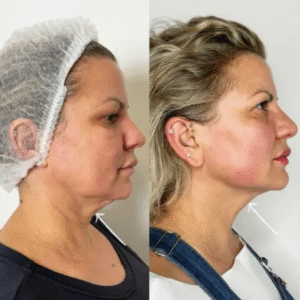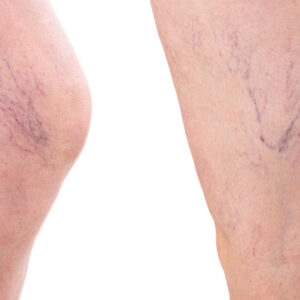A toned and flat abdomen is often a symbol of strength, health, and confidence. However, factors like weight changes, pregnancy, or aging can lead to stubborn abdominal fat and loose skin that may not respond to exercise or diet. This is where a Tummy Tuck In Dubai becomes a transformative solution for individuals looking to reclaim their body shape. While many people focus on the cosmetic results, understanding what to expect during recovery is just as important as the procedure itself. A fast recovery is possible when you know what lies ahead and how to prepare for it.
Understanding the Tummy Tuck Procedure
Before learning about recovery, it helps to understand what actually happens during a tummy tuck. The procedure is designed to remove excess skin and fat from the abdominal area while tightening weakened or separated muscles. It aims at creating a firmer and smoother midsection by restoring abdominal structure. There are different types of tummy tucks based on individual body needs, such as:
-
Mini: Targets only the lower abdomen
-
Full: Addresses both upper and lower abdomen
-
Extended: Includes flanks or sides for more contouring
Each type has a slightly different recovery timeline depending on the extent of correction.
Preparing for a Smooth and Quick Recovery
A successful recovery begins well before the procedure itself. Preparing in advance helps minimize challenges during healing and ensures a smoother experience. Important steps include:
-
Organizing a recovery space: Prepare a comfortable rest area with pillows, blankets, water, and essential items.
-
Arranging help at home: You may need assistance with mobility, especially during the first few days.
-
Planning meals: Pre-prepared nutritious meals save time and support healing.
-
Avoiding intense physical routines beforehand to keep the body balanced and ready.
Preparation sets the foundation for a positive recovery experience.
The First 24 Hours: Initial Healing Begins
The first day after the procedure is the most crucial. Your body begins the healing process, and rest becomes the priority. During this early stage:
-
You may feel tightness in the abdomen due to muscle repair.
-
Movement should be minimal except for small steps to improve circulation.
-
Hydration is essential to help your body recover faster.
-
Compression garments are usually worn to support the abdominal area.
Embrace rest during this phase, as it sets the stage for the rest of your healing journey.
Day 2 to Day 7: Managing Early Discomfort
During the first week, you will experience gradual improvement, although mild swelling and tightness are expected. Here is what to expect:
-
Limited mobility: You may walk slightly bent forward to avoid putting strain on your abdomen.
-
Improved energy: Most people begin feeling better by the third or fourth day.
-
Light meals and fiber-rich foods help prevent bloating.
-
Short walks around your space promote blood flow and prevent stiffness.
This week is a transition period, helping you adapt physically and mentally to temporary limitations while healing continues.
Week 2: Regaining Confidence and Mobility
The second week often brings noticeable improvements. Swelling begins to reduce, and moving becomes easier. Common experiences include:
-
Increased comfort while walking or sitting
-
Easier time performing simple tasks at home
-
Feeling eager to return to routine activities
However, it is still important to avoid lifting, bending excessively, or any activity that strains the midsection. Wearing your compression garment as recommended helps shape your results and reduces swelling effectively.
Week 3 and Week 4: Visible Progress
By the third week, your recovery shows visible progress. Your abdomen starts to appear flatter, and swelling decreases further. During this time:
-
Light work activities may resume
-
Energy levels continue to increase
-
Gentle stretching becomes more comfortable
Though you may feel nearly back to normal, continue to avoid workouts that target the abdominal area directly. Allowing internal healing ensures proper long-term results.
The Emotional Side of Recovery
Recovery isn’t just physical; it is emotional too. Some individuals feel impatient or concerned during the early days when swelling hides results. Others experience emotional ups and downs due to temporary lifestyle restrictions. It is important to:
-
Stay positive and patient
-
Set realistic expectations
-
Celebrate small milestones daily
Remind yourself that you made a powerful decision to improve your body and health. Recovery is not a race—it is a process that brings rewarding results.
Tips for a Fast and Safe Recovery
Following healthy recovery practices can help you heal faster and feel better sooner. Here are key tips:
-
Stay hydrated with water or electrolyte drinks
-
Eat nutrient-dense foods like fruits, vegetables, lean proteins, and whole grains
-
Avoid smoking or alcohol as they slow healing
-
Wear compression garments as recommended
-
Get adequate sleep to boost tissue repair
-
Avoid stress by keeping your routine simple
Consistency is the key. Healing improves gradually when the body receives proper support and rest.
Returning to Normal Life
Most individuals resume normal daily activities within a few weeks, but strenuous routines and workouts require more time. Light cardio such as walking is usually encouraged early, while abdominal exercises must wait until full internal healing occurs. Your body will signal when it is ready—listen to it.
Long-Term Results and Body Transformation
Once healing is complete, the final results reveal a firmer, flatter, and more sculpted abdomen. This transformation often boosts self-confidence and body image. Clothes fit better, posture improves due to abdominal muscle support, and core strength gradually enhances with time. Many people find that this journey motivates them to maintain a healthier lifestyle overall.

Myths About Tummy Tuck Recovery
Misconceptions can cause unnecessary fear or confusion. Let’s address a few common myths:
-
Myth: Recovery takes forever
Fact: Most people recover within weeks with proper care. -
Myth: The results look unnatural
Fact: Results look natural when proper techniques are used. -
Myth: It’s only for women
Fact: Both men and women choose this procedure to enhance their appearance. -
Myth: You can’t move for weeks
Fact: Gentle movement is encouraged during early recovery.
Understanding the truth helps you prepare confidently and make informed decisions.
Maintaining Results After Recovery
Maintaining your new shape involves adopting a healthy routine:
-
Follow a balanced diet
-
Stay active with low-impact workouts
-
Maintain a stable weight
-
Practice good hydration and self-care
These habits protect your investment in yourself and support long-lasting results.
Final Thoughts
Healing from a tummy tuck is a manageable and rewarding journey when you know what to expect. Early rest, proper care, and a positive mindset are the pillars of recovery. You will begin to see a transformation not only in your physical shape but also in the way you feel about yourself. Achieving a toned midsection becomes easier when you stay committed to recovery guidelines and trust the process. A Tummy Tuck Dubai offers more than physical change—it brings renewed strength, confidence, and a powerful sense of self. A faster recovery is possible when preparation, patience, and consistency come together. Your transformation does not end with the procedure—it begins there. Embrace your journey, stay focused on your goals, and enjoy the long-lasting benefits of a sculpted, confident new you.







